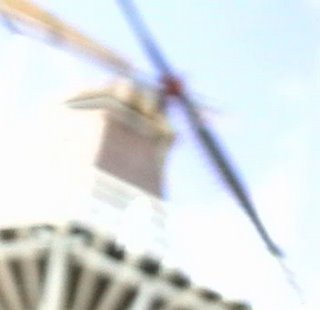Teo Baba

In 2001 I went to Nepal to have a holiday... So I thought. I arrived just in time for a 3-day national strike. That was a blessing in disguise as there was no motorised traffic or air pollution. I kept bumping into fellow traveler Carolijn Visser. The third time we met she told me about a Swiss artist called Teo Baba (Baba means Sage) who had recently died. She was about to visit his old room where he lived which was left unchanged since his death. It sounded like he was an 'outsider artist'. I was intrigued and asked if I could come along.
The following night we went to the restaurant above which Teo used to live. The owner was very happy to talk to us and showed us his room. It was now used for storing carvings, but a shrine Teo had made was still there. Underneath a pile of masks, on the dusty earthen floor I spotted a packet of A1 size watercolours by Teo, wrapped in torn plastic, exposed to dirt and dust.
Friends of Teo had come for most of his belongings after his death. What was left his landlord gave to the Swiss embassy, he did not want to be seen benefiting from Teo's, as he was highly respected in Nepal for his philanthropic work. His landlord explained how Teo had dedicated his life to help others and how he raised money to support a local orphanage by selling his art. No-one had taken the watercolours. They would not survive if left in this condition. A thought entered my mind. I was going care for Teo's art and somehow use the it to continue This legacy. It was getting late and time to go to bed, so I planned to return the next morning to copy Teo's scrapbook with information of his life's work and a book he had written. Luckily I took the watercolours that night as I was never able to return. Dramatic historic events got in the way of that idea.
That very same night, possibly at the same moment we found the watercolours the entire Royal Nepalese family was assassinated. The king, queen, prince and princess had died, except the crown prince, he survived but died two days later as a king. News about the massacre did not emerge till the next morning. Riots, curfews and two royal cremation ceremonies created chaos from that moment forward. Twelve days after I arrived I managed, during a break in the curfews to get to the airport when a Singapore Airlines plane arrived. Airport staff were back at work. Days earlier when I went to the airport they had all fled their posts. I reluctantly evacuated back to New Zealand leaving behind the wonderful people I befriended and Teo's notes and book.
I was not ready to leave I had two more days left in my holiday, hadn't done any of my planned shopping yet. I felt short changed. Little did I realise I had received a profound gift. Stumbling upon Teo's life story was to be the beginning of an unusual series of events and coincidences that would influence the course of my life.
I have decided to take a year off and explore in video format the significance of Teo's arrival in my consciousness. His watercolours have been a constant reminder that there is a story to be told...
The image in this post is one of Teo's watercolours. All his paintings are about eyes; eyes of Nepal. This one I believe to represent the eyes of the Green Tara, a deity of great significance in Teo's life.
Blessing
Axis Mundi
Discovery
First time round

I came into this life in Amersfoort, a small medieval town in The Netherlands. It was just the right size for me. As a young kid I would get on my bike during summer evenings after traffic had died down, ride the 1 Km to the medieval quarter and cycle round and round 'inhaling' history. I felt at home, it seemed so familiar, a magical stage to let my imagination run free. In 1985, the last year before I emigrated to New Zealand, I lived in the medieval quarter in an attic of a wonderful 16th century house on the corner of Valkestraat and Muurhuizen with a crazy bunch of flatmates. The strangest of rooms, 2.4mx7m, only 2.1m high, with a view of another medieval brick wall accross the narrow street, I loved it.

























